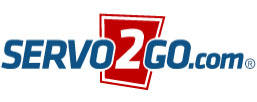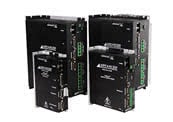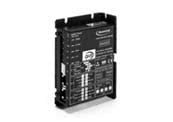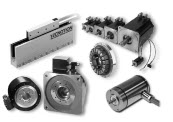Please be aware we use cookies to make your experience better. A cookie is a piece of data stored on a visitor's hard drive to help us improve your access and identify repeat visitors. Cookies can also enable us to track and target the interests of our users to enhance the experience on our site. Usage of a cookie is in no way linked to any personally identifiable non-public information. Learn more.
Servo Motors & Drives
Servo Motors, whether rotary or linear, provide a high level of control over angular and linear acceleration, velocity, and positioning. They are available in two types: brush and brushless, with the latter being the more favored choice in today's applications. Both types can operate within two torque ranges: continuous and peak. Continuous torque can be sustained throughout the regular operation of the motor, whereas peak torque is a higher level of torque attainable only for brief periods. Servo Motors are available in brush and brushless models.
- DC Brushed Motors are built with windings in the rotor and permanent magnets in the stator. Through carbon brushes and a mechanical commutator, a current path is established in the windings, which generates motor torque. When a DC power source is connected across the terminals of a DC motor, it induces continuous rotation. These motors, although designed with a simpler technology, can operate with basic motor controls. However, certain components, such as graphite or precision metal brushes, require periodic maintenance.
- Brushless Servo Motors feature windings in the stator and permanent magnets fixed to the rotor, eliminating the need for brushes. The rotation of the motor is facilitated by electrical commutation performed by the drive. These motors are known for their high acceleration and torque, as well as being maintenance-free. Offering the highest torque-to-weight ratio, Brushless Servo Motors are predominantly used in applications requiring superior precision, high throughput, and demanding performance. Whether it's rotary, linear, or frameless, brushless servo motors can execute either simple or dynamic motion, meeting a wide range of application requirements.
Servo Drives, also known as servo amplifiers, are components capable of transforming a low-power command signal from a motion controller into a high-power current or voltage. This amplified signal is then directed to the servo motor windings to generate torque.
Analog drives possess limited processing capability and conduct all their functionality in the analog domain. In contrast, digital drives house additional intelligence, enabling them to provide more functionality, superior diagnostic capabilities, and easier configuration.
Intelligent or Smart Drives merge some or all functionalities of a motion controller with the high-power electronics of a motor drive. They differ in the extent of control functionality and the type of communication interface they offer. Generally, they can be categorized into two types: fieldbus-based and deterministic bus-based.
Servo Drives are used in many of the same applications as servo motors, such as:
- Robotics
- CNC Machinery
- Automated Manufacturing
For more information, browse our selection of servo motors & drives below!



